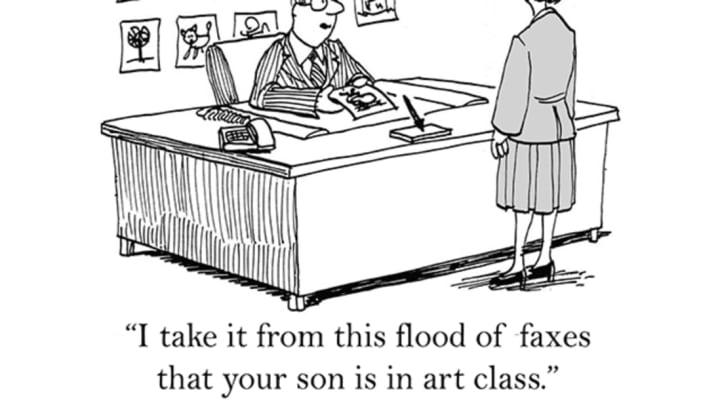A pair of Indiana University sociologists are looking at modern parenting attitudes from an unusual vantage point: Cartoons. In a paper presented at the American Sociological Association’s annual conference, Jaclyn Tabor and Jessica Calarco examine cultural feelings about parenting through cartoons published in The New Yorker between 1925 and 2006. As a way of studying the contradictions between portrayals of children as a precious gift or life-altering time-suck, the study asks “Are children seen exclusively as good and desirable? Or are they also seen as a bit of a nuisance?”
Parenting is increasingly intensive (and stressful), especially among the wealthy. And more adults are opting out. According to 2010 census data, about 20 percent of American women never have children, compared to 10 percent in the 1970s. In order to see whether or not these shifts were also reflected in pop culture, the researchers combed through a sample from more than 70,439 New Yorker cartoons, noting how the magazine’s cartoonists have lampooned parenting over time.
“Humor requires cultural resonance—comedy often hinges on the revelation, distortion or exaggeration of cultural realities,” the researchers write. Overall, they found that cartoons that showed having kids as beneficial waned over time, while cartoons about bad parenting have increased since the 1920s.
Almost 30 percent of all the parenting-related cartoons involved children doing something beneficial to society, like delivering papers or providing services or good deeds for their neighbors. Most of these were published in the middle of the 20th century.
Almost 18 percent of all the jokes poked fun at the cost of having children—most of them from either the beginning of The New Yorker’s run or its more recent issues. “Darling, here’s the bill from the hospital. One more installment and the baby’s ours!” a 1928 cartoon quips, while a 1996 one reads “Your mother and I think it’s time you got a place of your own. We’d like a little time alone before we die.”
And 17 percent of all the cartoons represented having kids as a natural part of life, depicting normal activities like families picnicking or walking around town. These were more common in the middle of the century, but have since been on the decline (probably as not having children became more normal, as the census data shows).
The researchers conclude that in eras where children are seen mostly through the lens of their high cost—in terms of finances, parental freedom, and life balance—people are more likely to opt out of having them. Cartoons from the 1920s and those from the late 20th and early 21st centuries were both more likely to poke fun at the cost of kids, coinciding with higher rates of childless people in those eras.
Cartoons: More important than you thought.
